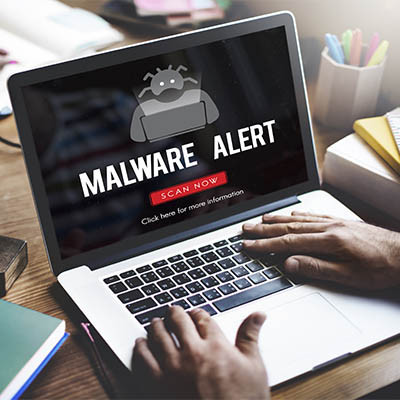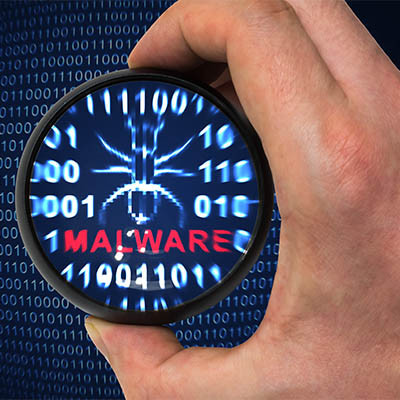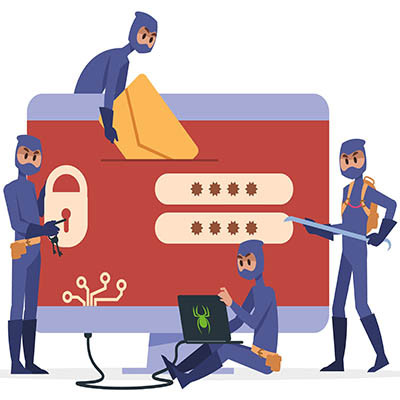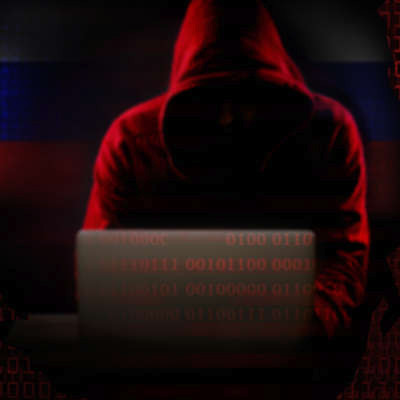It’s the holiday season, and with it comes a multitude of hackers trying to cash in on everyone’s online purchases. These phishing scams always increase when the holiday season comes around, so it’s best to stay vigilant so that you don’t give yourself the gift of sadness this year. One such threat is already here, and it’s voice spoofing of Amazon orders.
Cerberus IT Solutions Blog
There are many different types of hacking attacks, but those targeting your computer can either be incredibly intrusive or so low-profile that you don’t even know you’ve been infected until it’s too late to do anything about it. Let’s discuss some of the telltale signs of a hack and what you should look for to prevent or identify them.
Hackers are a crafty bunch. They will use any and all means to infiltrate businesses, including some that are downright shameful. One of the most devastating ways that hackers make these attempts is through the use of phishing attacks, or attacks where they essentially trick users to click on links in emails or hand over confidential information.
This past May, Ireland’s Health Service Executive—the organization responsible for providing healthcare and social services to the country’s residents—was successfully targeted by a major ransomware attack. Unfortunately, we are still talking about it now because the entire situation has forced us to acknowledge the aftereffects of such an event.
Once again, ransomware strikes, this time targeting the world’s largest meat processor and distributor, JBS S.A. This disruptive cyberattack forced the company to suspend operations in both North America and Australia, a move which had devastating consequences to the supply chain. What can we learn from this situation?
Hackers are always taking advantage of others’ misfortunes, and they have even gone so far as to leverage the COVID-19 pandemic in efforts to launch phishing attacks. How have hackers utilized this worldwide disaster to their benefit, and what can we do to keep our organizations secure in this troubling time? Let’s find out.
Anyone who uses a computer regularly knows that software can be finicky. Developers continuously update their software to account for changes in security threats and to add new features. For the small business, integrating and developing software can be useful, but it can also be one of the most problematic issues you can face; and, oftentimes it can often go under the radar. Let’s look at a few ways that old software bugs can cause problems for your business.
We will never pass up the opportunity to draw attention to the importance of cybersecurity awareness, as it is a crucial element for any business to consider. One serious issue that has caused significant stress amongst businesses is phishing. Let’s consider some recent statistics to evaluate where we stand right now, specifically in terms of the prevalence of phishing attacks.
Cyberattacks have been carried out by nations for decades, but for whatever reason, our minds still build the hoodie-wearing cyberpunk sitting at a laptop in a dimly-lit room. This often isn’t the case. Today, we thought we would shine a light on state-sponsored hacking, starting with the attack carried out recently against the U.S.-based cybersecurity company FireEye.
During the COVID-19 pandemic there have been quite a few different types of scams. At first, most of the scams centered around economic relief money that was doled out to people to help prop up the fledgling economy. More recently however, scammers have focused on vaccines. Today, we will take a closer look at some of these scams, as they are growing in sophistication.
Business success is often tied to the quality of your business relationships. There are a lot of people you need to trust: your vendors to get you whatever supplies you need, your team to complete their responsibilities without letting in threats, and your customers to turn to you for what they need. Unfortunately, cybercriminals are willing to take advantage of such trust to accomplish their own ends.
With the 2020 U.S. Election under a month away, there has been a lot of concern that outside interests would try to influence the results. Microsoft has recently disrupted a huge coordinated hacking effort that had designs of altering the election infrastructure needed for a fair and secure election. Let’s take a look at the effort and Microsoft’s response in today’s blog.
Phishing attacks are a very common threat nowadays. Between the classic message from a supposed Nigerian Prince to a sudden and urgent email from the bank with attachment in tow, we’ve all seen our share of them. That’s the trick to stopping them—being able to spot them. Let’s go over five signals that a message may be a phishing attempt.
“Hello sir/ma’am, I am a member of royal [sic] family and I am in grave danger in my country. If you send me money to get out safely, I will share my great riches with you as reward.”
Scams like this one have become a punchline for many, which makes you wonder why they are still commonly used by cybercriminals. As it turns out, there’s a very compelling reason that they do so, one that’s been known for years.
The World Health Organization has been busy dealing with one of the biggest calamities in contemporary times, the COVID-19 pandemic that has had much of the world on pause for the past few months. Unfortunately, they’ve been dealing with an increase in cyberattacks. Today, we’ll take a look at some of the issues the WHO is having with cybercriminals.
Millions of people are still using the Microsoft Windows 7 operating system despite it being completely unsupported. When Microsoft pulled the plug on support for the OS in January, most industry professionals expected there to be some exploits found pretty rapidly. It turns out that the very first exploit was actually Microsoft’s fault, and that Windows 7 support had a little life in it after all.




















